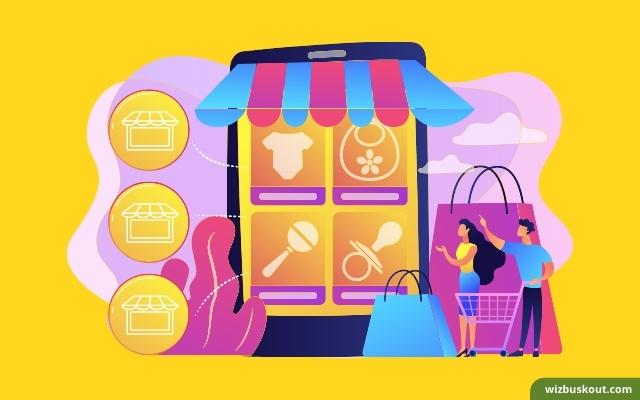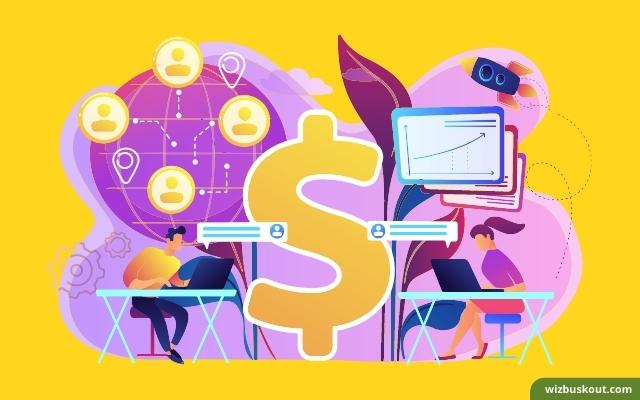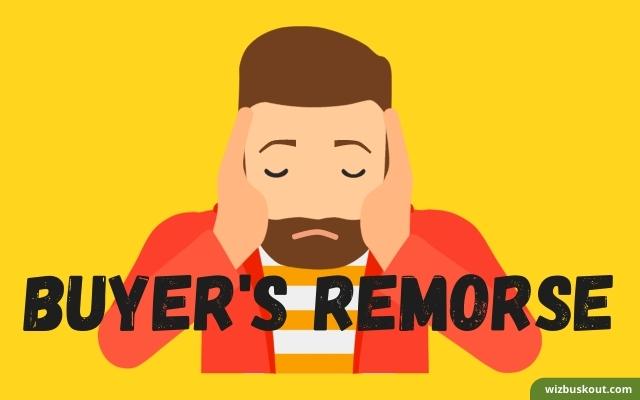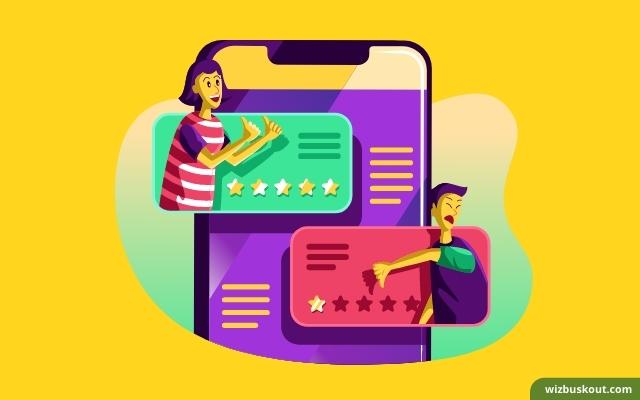1-Line Summary: Never Lose A Customer Again by Joey Coleman teaches you how to build a long-term relationship with customers by providing a delightful experience and never losing them.
[amazon box=”0735220034″ template=”horizontal”]
Never Lose A Customer Again Summary [PDF]
What if you could retain your customers for a lifetime?
Imagine the profits your company will make then.
In this book, the author discusses all the things a company should do to ensure their customers become raving fans.
And in this book summary, I’ll be discussing my best learnings from this book.
So without further ado, let’s dive right in.
Lesson #1: Acquiring new customers is more expensive than retaining old customers.

The author says that most businesses focus on getting new customers but fail to meet the expectations of their current customers.
The thing is:
Most new companies want to grow their customer base.
And they don’t know how to retain their current customers for longer.
Acquiring a new customer is a part of the business.
But ignoring other things like delivering a great experience, making the current customers happy, etc., does more damage than good.
A company that ignores these areas always finds itself chasing new customers. Their old customers don’t stick long enough to do business with them, especially if they have other options.
The author says that the key to building profitable long-term relationships with customers is retaining customers for a lifetime.
During his research, the author found that the probability of selling is 60-70 when it comes to old customers, while it’s only 5-20 percent when it comes to new customers.
And it’s natural.
Why? Because new customers aren’t sure whether your company can deliver on its promises.
While on the other side, old customers have experienced your product or service once, so if you have delivered value, they are more likely to rebuy it.
The question is:
What is a great experience?
This becomes even more confusing because the words “value” or “great experience” are highly subjecting. That means they have a different meaning for everyone.
You know, people have different perceptions of the same thing.
So how should a company ensure that the customer has a great experience after the sale?
How should business owners track all these things?
And the most crucial question: How to increase customer retention?
Keep reading to learn answers to all these questions.
Lesson #2: What you think customer experiences is different than what customer actually experiences.

Allow me to explain.
All business owners have a perception of their business. They all believe in good faith that they are adding value to their customers’ lives.
Now here is the thing:
Customers don’t care about what the company thinks. All the customers care about if they are getting the expected value for the price they paid or not.
There is a difference between the perception of the company and the customer.
The customer might feel underserved despite getting the value promised at the time of purchase.
It’s usually hard to figure this out.
But in this book, the author has shared each phase that a customer goes through before and after a sale.
The key is to track the customer journey.
What is the customer journey?
Every customer goes through an emotional roller coaster before and after purchasing.
Every customer has weird doubts, expectations, problems, etc., that he expects the company to fulfill as he pays money.
Sadly, most companies fail to do so as they are more interested in finding new customers to grow their numbers.
Tracking a customer’s emotional journey requires a deep investigation about who the customer is and what he feels when he uses your product or service.
Yes, it’s hard.
Why it’s so hard? Because customers don’t tell clearly how they feel.
They may write a review or talk to their friends.
Sometimes, they don’t even say anything. They just stop buying from you. And you keep thinking about what happened.
It’s all about knowing your customer well.
The question is:
How much time should a company spend postsale so that customers become your raving fans and finally spread the word about your company through word-of-mouth?
And what’s the right way to do all these things?
Lesson #3: The first 100 days after the purchase are more critical than you think.

Heard the famous phrase that “First impressions matter!”?
Yes, they do.
Although it’s not right to judge things based on their first impression.
But unfortunately, customers will make their opinions about your product or service based on that first impression.
Customers are ordinary people, after all. They don’t read business books like you and me.
And an average person is highly influenced by what he sees.
Most customers won’t spend time learning about how your company operates. All they want is a product or service that can solve their burning problem.
Just think about it.
Do you read manuals for every product you purchase? Do you even bother about who is running the company and how the company started?
You don’t, right?
Unless you are a geek or highly interested in running your own business, you won’t worry about all those details.
That’s why the author gives the number “100 days.”
This is no magic number.
So why 100?
The thing is:
Numbers help us track. How do you know if you are on the right track if you can’t measure something?
If you can ensure a great customer experience after 100 days of the sale, the chances of the customer giving you repeat business increase significantly.
As we discussed earlier, most companies get busy finding new customers by this time. Due to this, the customers feel abandoned or ignored.
Instead, once the sale is made, the customer must feel like a part of something bigger—a part of a community or tribe.
A customer must feel that he has done something meaningful by associating him with your company.
Lesson #4: Your salesperson doesn’t care about what happens after the sale is made.

The author talks about how most salespersons are target-driven. Their only target is to bring as many sales as possible and earn more.
They don’t care about what happens after the sale is made.
You know, that’s also the reason we hate salespeople.
Sales is not a bad thing. It’s the attitude that “I don’t care about postsales” that is wrong.
The author suggests that a company must ensure that the customer’s expectations are met after the sale is made.
A company must not ignore its customer right after the sale has happened.
To ensure this, you can send a personalized confirmation email saying, “Thank you for your purchase. Here is what to do next…”
This helps the customer decide and build up the right expectations from the beginning.
If you don’t tell the customer what to expect, the customer might have unrealistic expectations in his mind. And as a result, when those expectations won’t be met, your brand value will decrease.
That customer would never buy from you again ever.
Train your salesperson not to do marketing gimmicks that might hurt you in the future.
After the salesperson’s job is over, you must have the proper process to guide the customer in the right direction.
Yes, you have to guide your customer.
It’s like handholding a kid and telling him what to do as he has no idea about life.
In the same way, customers don’t know what to do.
Don’t expect your customers to know everything about your company.
Remember, there is a dramatic difference in how you see your company and how the customer sees it.
Your goal must be to bridge this gap, says the author.
Lesson #5: Make the purchase memorable by giving a surprise gift to your customers.

One trick to make the customer experience better is to give a surprise reward to your customers.
For example:
When you sign up for a free trial, many companies give special one-time annual discounts on their plans. This entices the customer to purchase and makes the customer feel that he is getting a unique opportunity.
This gives the customer a sense of achievement.
The author talks about a toy company that would celebrate and take photos with its customers when they bought a toy.
Also, some companies would send you a personalized welcome video congratulating you on your purchase.
This strengthens your company’s relationship with the customer.
The customer remembers these fine details for a long time, and it becomes highly likely that the same customer will buy from you again.
Unfortunately, many companies ignore these tiny details.
Many business owners don’t consider this critical. They focus more on getting new customers. And forget that focusing on their old customer is even more critical.
But do you know why this works?
Why do we like surprise gifts?
The thing is:
We have all loved receiving gifts ever since we were kids.
We all carry these habits into our adulthood.
Also, when a company underpromises and over-delivers, it goes way beyond our expectations.
As a customer, we don’t often hold high expectations from companies.
When we personalize a gift, the customer feels special.
We all want to feel special, right?
In short:
Take some time to think about making the purchase memorable for your customer.
What do your competitors do during this phase?
If your competitors are ignoring this phase, you have a golden opportunity.
You must know what your customer is feeling while buying from you.
Do they have doubts?
Is there something about your company that makes customer feels insecure while making a purchase?
Remember, a customer’s emotions might change rapidly, and you might not even realize what happened.
Sometimes, the customers start doubting their own decisions.
Lesson #6: Fight “buyer’s remorse” using immediate gratification.

What is Buyer’s Remorse?
According to Google Dictionary:
Buyer’s Remorse is a feeling of regret experienced after making a purchase, typically one regarded as unnecessary or extravagant.
Most customers buy emotionally. And if there is any logic, it’s very little.
After all, human beings are highly emotionally driven creatures.
But the problem with emotions is that they are temporary.
The same phenomenon happens with buyers.
After purchasing something, they soon realize that they didn’t need that item.
It’s not a good feeling.
If the item doesn’t provide an excellent experience to the buyers, these negative feelings become more intense and hurt the customers’ experience.
What can you do as a business owner?
You have to “Reaffirm” the customer’s choice of making the purchase.
You have to do something so that customer becomes confident that he made the right decision.
The question is:
How do we do that?
You see, every customer has a problem that he wants to fix.
So you have to provide some kind of immediate gratification as soon as you can.
The customer must feel a sense of achievement after using your product or service.
The author gives the example of Apple iPods.
Steve Jobs started selling pre-charged iPods to customers to avoid charging them before using them.
As a result, the customers could instantly start experiencing the product after buying it.
The longer the customer has to wait to experience the product or service’s benefits, the more likely it is that the customer will experience Buyer’s Remorse.
Is Buyer’s Remorse a bad thing?
Not really.
It’s only a natural phenomenon.
It puts your product to the test.
If you pass that test, your relationship with your customer becomes even more robust.
It’s normal for people to doubt their decisions.
By making things easier for your customers, you say, “Don’t worry! You made the right choice.”
The customers need a little reassurance.
No customer wants to look like an idiot. They want to make sure that they make the right choice.
The key here is to build an onboarding process.
You have to map out every phase the customer passes through.
Write down precisely what feelings or emotions your customer might experience. And then plan the onboarding process.
But all these things don’t matter if your product doesn’t deliver the results you promised at the time of purchase.
Lesson #7: Make sure your customers receive the desired results.

Most businesses, as we discussed, use marketing to bring in new customers.
But that’s it.
If your product doesn’t deliver any real benefit or help the customer achieve his goal, it won’t help you much.
Note this:
Your success depends on your customer’s success.
If you can’t help your customer succeed, you won’t be in business for long.
The question is:
How do you know whether the customer has achieved success or not?
What happens is: If a customer fails to achieve the expected results from a product, he forgets about it.
Most people don’t even tell their friends about their bad purchases. And if they ever do, it sends a negative signal about your company.
You would want to make sure that they share success stories if people talk about your company. Not failure stories.
This is one of the best free marketing methods out there.
People like to buy what their friends like to purchase.
We are social beings, and if one of our friends recommends a product or service to us, we get preframed and expect good things.
This is different from traditional marketing, where a prospect sees an advertisement. And if he finds it appealing enough, he might give your product a shot.
But here, the risk is involved.
“What if the product is not delivered?”
“What if the company doesn’t give any customer service after the purchase?”
As a business owner, you have to get rid of all these customers’ doubts.
You also have to make sure that you deal with any problems that customers encounter while using your product or service.
Don’t leave them stuck!
To ensure this, you can book in-person meetings or phone calls with the customers, asking about their experience with the product.
Was it easy to use?
If yes, what was the best part?
If not, what could be improved?
One thing worth noting here is that how customers feel sometimes matters more than the product itself.
It’s more about the customer who is using the product.
No product is perfect, and neither is the customer.
So you also have to look if the issues are genuine or it’s the mistaken perception of the customer.
Either way, you have to guide your customer in the right direction to achieve their expected results.
And if you can surpass their expectation, it’s like a cherry on top of a cake.
Lesson #8: Get referrals and testimonials without looking desperate.

Referrals and testimonials are crucial.
But most business owners are too eager to get a testimonial that they sometimes look desperate.
The author says that you should treat all this as going on a date.
Suppose you ask too much too early. You might look desperate. And the other person might lose interest in you.
In the same fashion, when you throw too many calls to action at your customer when he has just bought one of your products, you reduce the chances of that person buying from you again.
Instead, you should think about how you can elevate customer satisfaction by delivering a great experience.
Also, customers aren’t motivated to give companies referrals or write great testimonials.
And the solution here is:
Give something for free!
People love free stuff. So if you are offering your customer something for free in exchange for a referral or testimonial, they will be motivated to do so.
For example, most companies provide discounts per referral.
Some companies even give cashbacks for writing a five-star review.
Please note that you don’t have to give something expensive for free.
Your freebie could be something simple and yet offer value.
The key here is to understand whether your customer will find your freebie valuable or not.
If it’s not relevant, it won’t motivate your customers to take action.
Now, how do you deliver your freebies?
Email is one of the best ways to do that. You can write a personalized headline to get your customer’s attention and provide a link to your freebie within the email.
Or, if you want to go the extra mile, you can ship something offline.
All these things depend on your customer and what he thinks would be valuable.
The ideal way is to create your systems so that your customers get a great experience while interacting with your product or team.
Your customers will promote your product or service to their friends if you achieve that.
It’s one of the most natural and effective forms of marketing.
Never Lose A Customer Again Key Takeaways
Here is a list of key ideas you have learned so far:
- Acquiring new customers is more expensive than retaining old customers.
- What “you think customer experiences” differs from “what customer actually experiences.”
- The first 100 days after the purchase are more critical than you think.
- Your salesperson doesn’t care about what happens after the sale is made.
- Make the buying memorable by giving a surprise gift to your customers.
- Fight “buyer’s remorse” using immediate gratification.
- Make sure your customers receive the desired results.
- Get referrals and testimonials without looking desperate.
Never Lose A Customer Again Book Review
[amazon box=”0735220034″ template=”horizontal”]
I think every business owner should read this book at least once.
It offers all the stages you need to take care of to deliver a delightful experience to the customer.
The author’s writing style is engaging. You won’t ever be bored.
The stories shared by the author and the way he presents the information are great as well.
I didn’t find any problem with the book.
The only problem was the book that I ordered from Amazon. Its binding was damaged a bit. So I decided to return. But that was a rare case. Hopefully, you won’t have such an issue.
Personal rating: 8/10
I highly recommend that you read this book. It will teach you so much about customers’ emotional journey that they go through before and after the purchase.
Get this book on Amazon: [amazon link=”0735220034″]
What next after reading this?
If you are lost and wondering what to do next, here are a few things you can do:
#1: Read more book summaries that teach business
- Building a story brand [Buy the book | Read summary]: It teaches you about using stories and building a solid brand that people can strongly relate with.
- Before you start up [Read summary]: It teaches you things you should know before starting your start-up.
- The automatic customer [Buy the book | Read summary]: This teaches how to build a subscription-based business using various models.
- The Lean Startup [Buy the book]: This will teach you how to launch a minimum viable product and save lots of wasted time and effort.
- Zero To One [Buy the book]: This will teach you how to build a monopoly without copying the same business ideas and go from ‘zero one’ instead of ‘one to n.’
#2: Try LinkedIn Premium free for 1-Month and do Business courses.
LinkedIn has more than 16000+ courses taught by real-world professionals.
So you can imagine how much you will learn about building and running a profitable business.
After watching those courses, you also get to network with professionals and thus connect to like-minded people.
Pretty impressive, right?
So what are you waiting for?
➡️Claim your 1-Month Free Trial.
Now it’s your turn!
There you have it.
If you enjoyed reading this book summary, let me know in the comments below.
If you want to watch premium animated book summaries, subscribe to my YouTube channel. And also, subscribe to my email newsletter so that you never miss an update.
Thank you for reading.
